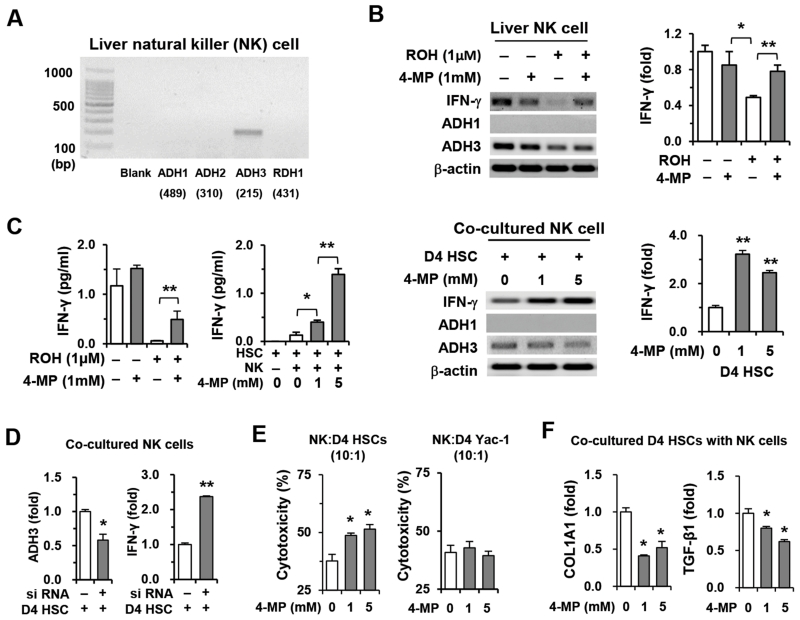Fig. 3.
Retinol suppresses IFN-γ production and cytotoxicity of NK cells against HSCs through ADH3. Freshly isolated NK cells from WT mice were used for in vitro experiments. (A) Expression of retinol metabolizing enzymes was analyzed using liver NK cells. (B) NK cells were treated with retinol or co-cultured with D4 HSCs for 3 hours in the presence or absence of 4-MP and then subjected to RT- and real-time PCR analyses. (C) IFN-γ levels of supernatants were measured. (D) Liver NK cells treated with ADH3 siRNA or scramble siRNA were co-cultured with D4 HSCs and subjected to real-time PCR analyses. (E) Liver NK cells were used as effector cells for a cytotoxicity assay against D4 HSCs and Yac-1 cells in the presence or absence of 4-MP. (F) Co-cultured D4 HSCs with NK cells were subjected to real-time PCR analyses. Data are expressed as the mean ± SEM. *P < 0.05, **P < 0.01 in comparison with the corresponding controls.

